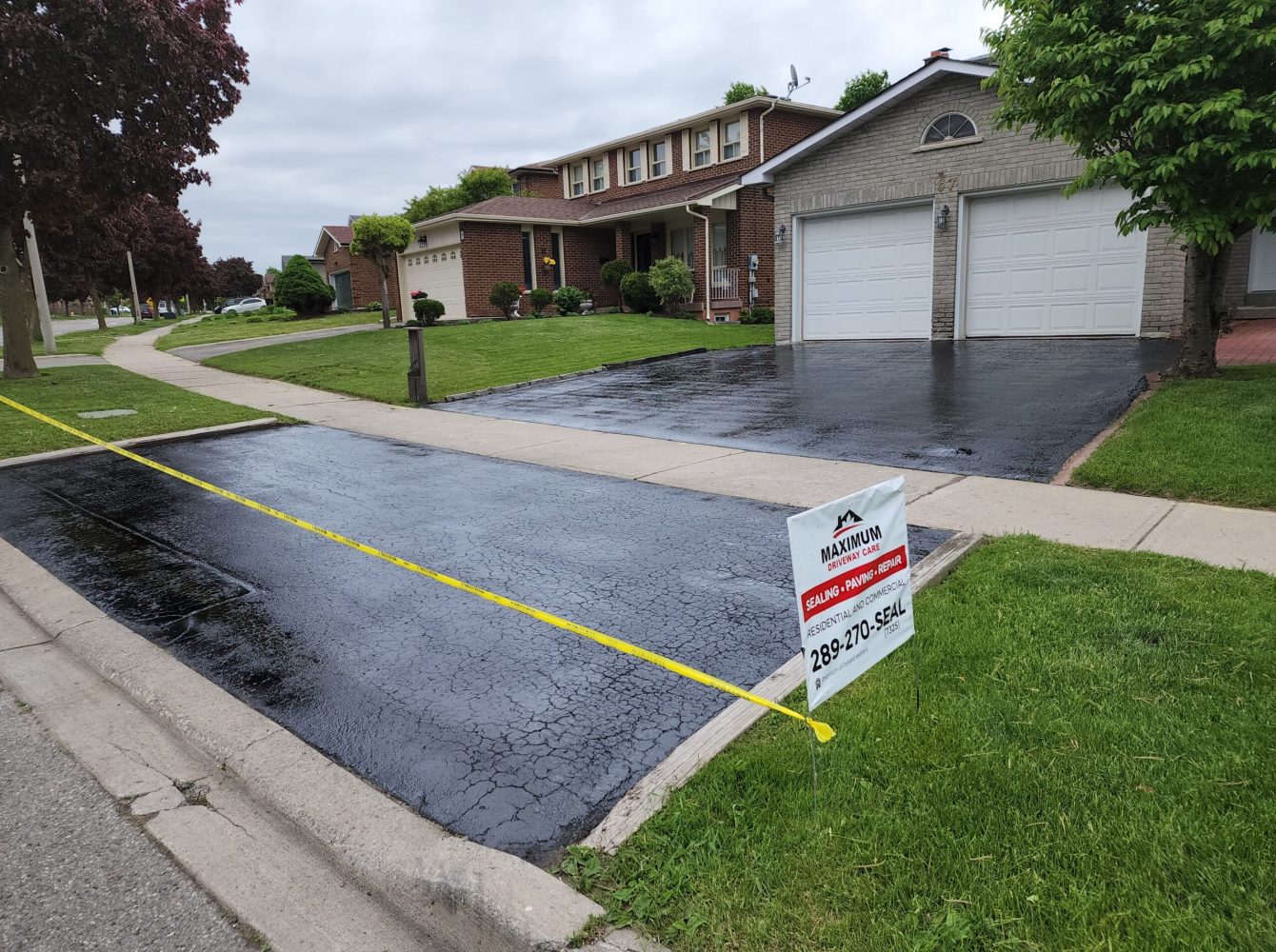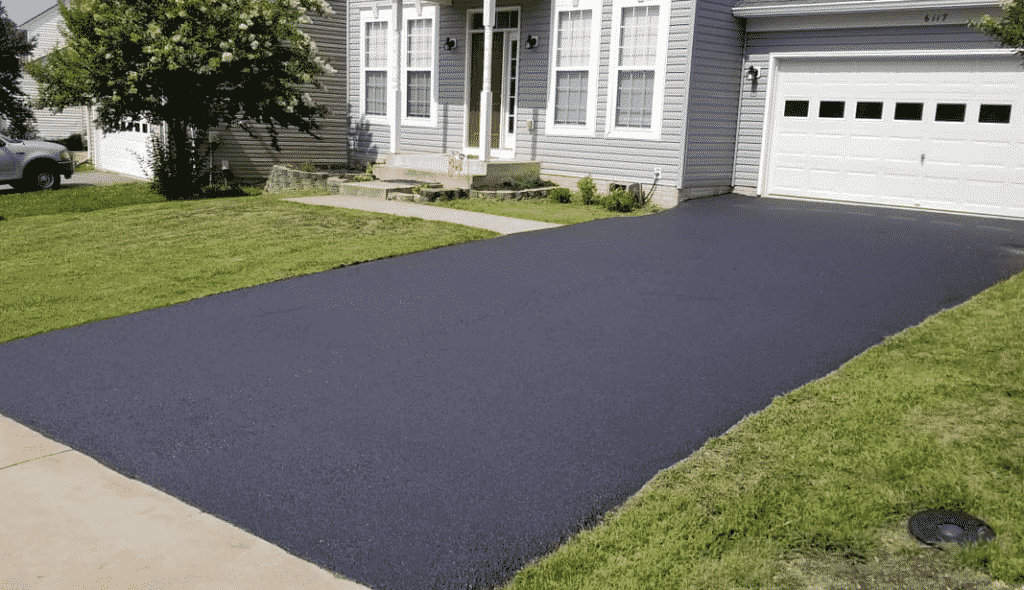Grasping Angled Parking: How Asphalt Sealing Enhances Commercial Lots
Grasping Angled Parking: How Asphalt Sealing Enhances Commercial Lots
Blog Article
Hot Mix Asphalt: A Sustainable Solution for Sidewalk
Warm Mix Asphalt (HMA) has arised as a leading sustainable option for pavement solutions, offering a myriad of ecological advantages and ingenious innovations. As the demand for green building techniques grows, checking out the nuances of HMA's sustainability can supply valuable insights into the future of sidewalk services.
Environmental Benefits of Hot Mix Asphalt

Furthermore, Warm Mix Asphalt helps to reduce metropolitan warm island results. Its dark color absorbs sunlight, decreasing the quantity of heat reflected back right into the atmosphere compared to lighter-colored pavements. This can lower ambient temperatures in city areas, reducing the need for a/c and eventually minimizing power usage.
On top of that, Warm Mix Asphalt adds to enhanced stormwater management. Its porous nature permits water to charge and infiltrate the pavement groundwater supplies, decreasing overflow and the risk of flooding. These environmental benefits make Warm Mix Asphalt a lasting choice for leading freeways and roads.
Energy Efficiency in HMA Manufacturing
Is energy efficiency a critical factor in the manufacturing of Warm Mix Asphalt (HMA)? Energy plays a significant duty in the manufacturing of HMA, impacting both expense and environmental sustainability. One crucial element of energy effectiveness in HMA manufacturing is the use of cozy mix asphalt (WMA) innovations.
Furthermore, innovations in plant technologies have actually brought about more energy-efficient HMA manufacturing processes. Modern plants are made with functions like recycled asphalt sidewalk (RAP) handling capacities, effective burner systems, and boosted insulation, all adding to energy cost savings. By optimizing power usage in HMA manufacturing, the market can reduce its carbon footprint while keeping top quality sidewalk materials. Energy efficiency is, consequently, a critical consideration in ensuring the sustainability of Hot Mix Asphalt manufacturing.
Recyclability of Warm Mix Asphalt
The recyclability of Warm Mix Asphalt (HMA) is a critical facet of its sustainability and long-lasting environmental influence. HMA is just one of one of the most recycled materials in the United States, with over 100 million lots of redeemed asphalt pavement (RAP) being recycled annually in new pavement building and construction. Reusing HMA supplies several ecological advantages, such as lowering the need for virgin products, decreasing energy usage throughout manufacturing, and lowering the amount of waste sent to land fills.
The process of right here recycling HMA entails milling the existing sidewalk, squashing it into smaller sized pieces, and mixing it with new accumulation and asphalt binder to create a recycled mix. This recycled mix can typically execute as well as or perhaps much better than standard HMA, while calling for fewer resources and producing reduced greenhouse gas emissions. By including RAP into brand-new pavement jobs, road agencies can save natural sources, decrease expenses, and reduce the environmental impact of roadway construction and maintenance tasks. In general, the recyclability of HMA plays a substantial role in promoting lasting practices within the pavement market.

Long-Term Efficiency of HMA
Asphalt sidewalks demonstrate sturdiness and strength over an extended period, mirroring the long-lasting efficiency of Hot Mix Asphalt (HMA) The long life of HMA can be associated to its capacity to withstand hefty traffic loads, extreme weather, and the effects of aging. Researches have actually revealed that properly designed and effectively created HMA pavements can last for 20 years or even more with regular maintenance. The trick to making the most of the long-lasting performance of HMA depends on making use of top quality products, following finest techniques in building and construction, and applying efficient upkeep approaches. Correct drain, routine inspections, and timely repairs are necessary for preserving the architectural integrity of HMA pavements over time. Furthermore, developments in HMA technology, such as making use of polymer-modified binders and cozy mix asphalt, have better enhanced the resilience and longevity of HMA sidewalks. By prioritizing high quality building and upkeep methods, HMA remains to prove itself as a economical and sustainable option for durable pavement framework.

HMA: Toughness and Sustainability
Demonstrating both durability and sustainability, browse this site Hot Mix Asphalt (HMA) has become a cornerstone in the building and construction of lasting pavement infrastructures - angled parking. HMA's toughness originates from its ability to stand up to hefty loads, harsh climate conditions, and high web traffic quantities, making it a trustworthy click resources selection for highways, freeways, and airport terminal runways. The make-up of HMA, which typically includes accumulations, binder, and filler, plays a crucial role in enhancing its durability and resistance to tear and wear
In addition, HMA's sustainability hinges on its recyclability and energy-efficient production process. The capacity to reuse reclaimed asphalt sidewalk (RAP) in brand-new HMA mixes decreases the need for virgin products and minimizes the environmental influence of pavement building and construction and upkeep. Additionally, the energy performance of creating HMA hinges on its reduced mixing temperatures contrasted to various other sidewalk materials, causing minimized energy intake and greenhouse gas exhausts.
Final Thought
To conclude, hot mix asphalt (HMA) offers a lasting solution for sidewalk with its environmentally pleasant features. HMA's recyclability, power performance in production, and long-term longevity make it an environmentally friendly choice for roadway construction. By preserving natural deposits, lowering waste, and lowering greenhouse gas discharges, HMA plays a vital role in advertising sustainability in facilities advancement. Its capability to reduce metropolitan heat island impacts better highlights its value in developing resistant and environmentally mindful sidewalk systems.
HMA is one of the most recycled products in the United States, with over 100 million lots of redeemed asphalt sidewalk (RAP) being recycled yearly in brand-new sidewalk construction.The process of reusing HMA includes milling the existing pavement, crushing it into smaller sized items, and blending it with brand-new accumulation and asphalt binder to produce a recycled mix.Asphalt pavements show resilience and durability over a prolonged period, mirroring the long-term performance of Warm Mix Asphalt (HMA) Furthermore, developments in HMA innovation, such as the usage of polymer-modified binders and warm mix asphalt, have actually additionally enhanced the durability and long life of HMA sidewalks. The capability to recycle recovered asphalt sidewalk (RAP) in brand-new HMA blends lowers the demand for virgin products and reduces the environmental effect of sidewalk construction and maintenance.
Report this page